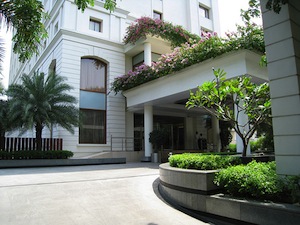
Over the next five years, experts say, India's green building sector will outpace the growth of the country's overall construction sector. But with today's green infrastructure penetrating just 3% of all construction, India's green building boom may have only just begun.
Evidence of this trend is already apparent. In July 2010, Terminal 3 was opened at New Delhi's international airport, becoming the world's first and largest terminal building to win a LEED-Gold certification. Soon after, the Rajiv Gandhi International Airport in Hyderabad won a LEED-Silver rating.
In India, the market for green buildings is exploding. The sector there is set to be worth more than $50 billion by 2015, according to industry analysts.
"In recent years, India has emerged as one of the world's top destinations for green buildings, and [the country] has implemented a number of home-rating schemes and building codes," says Yusuf Turab, managing director of YT Enterprises, a green-building consultant in Coimbatore.
"To give you some numbers, India has 1,550 registered buildings, 210 certified buildings and over one billion square feet of green-building footprint," Turab adds.
Much of this trend began in 2004 with the inauguration of the Hyderabad-sited Confederation of Indian Industry's Green Business Centre, which at the time was one of the world's greenest buildings. Soon after, the Indian Green Building Council was formed. In partnership with the U.S. Green Building Council, it then brought the Leadership in Energy and Environmental Design ratings to India.
In a country like India, the need for eco-friendly buildings is massive. India currently is going through a real estate boom, with construction sites littered across entire cities and towns.
Green buildings are a natural fit in this environment, says Vikram Bahri, of Green Buildings India, a green project management consulting firm. "For centuries, Indians have used their natural resources very innovatively and prudently—for example, water harvesting in the temples of Rajasthan and natural lighting in forts and palaces."
“Because India largely depends on imports for its fossil fuel, the government and community is very enthusiastic about learning and incorporating green practices to optimize energy use,” he adds.
The private sector is the major driver for India’s green-building boom. "A significant factor is the lack of differentiation creeping into the real estate sector at the moment," says Turab. "Green buildings bring about a certain differentiation factor, which developers can leverage for brand-building, quality improvement and commanding a premium for their spaces.”

Post a comment to this article
Report Abusive Comment